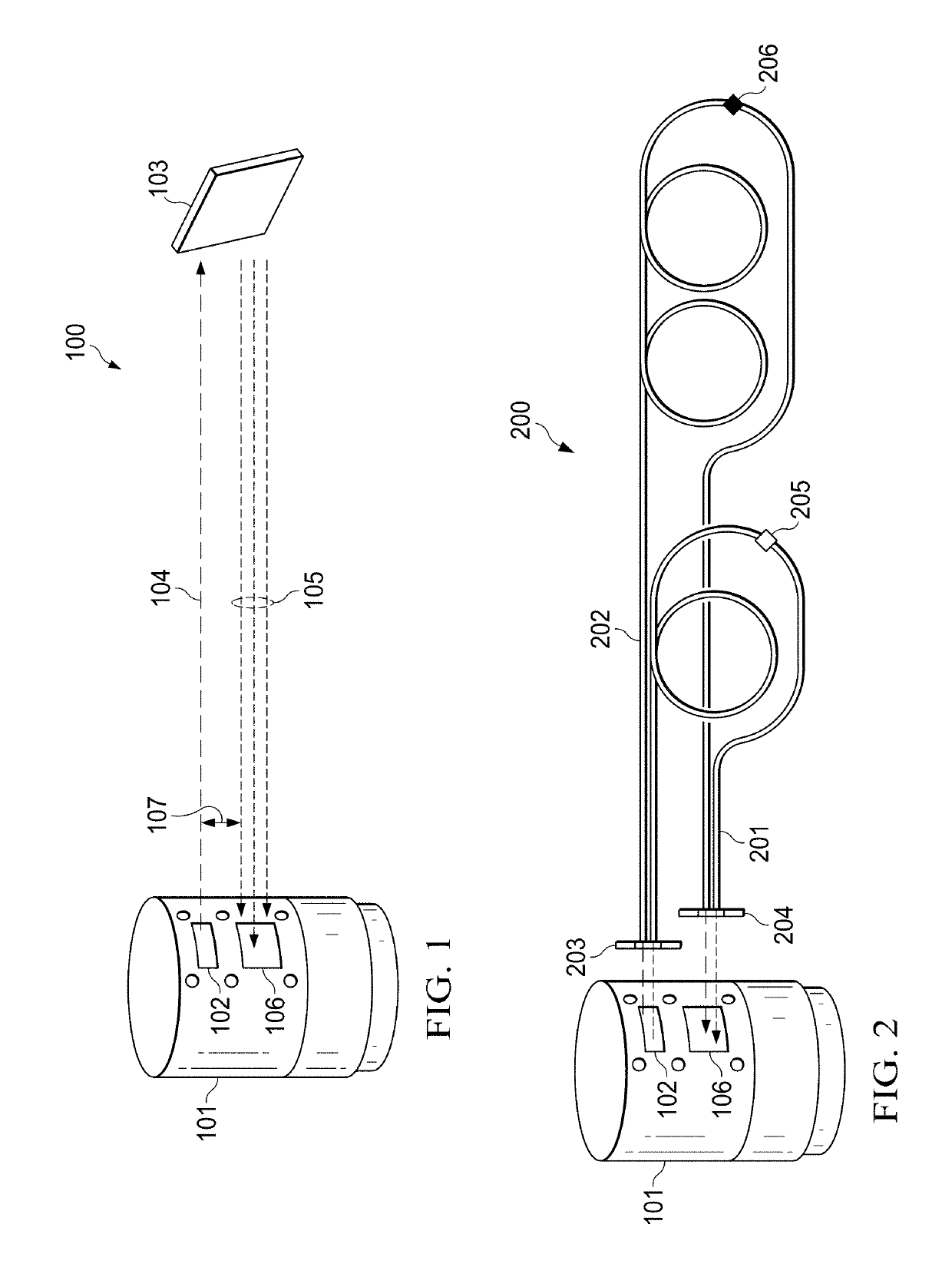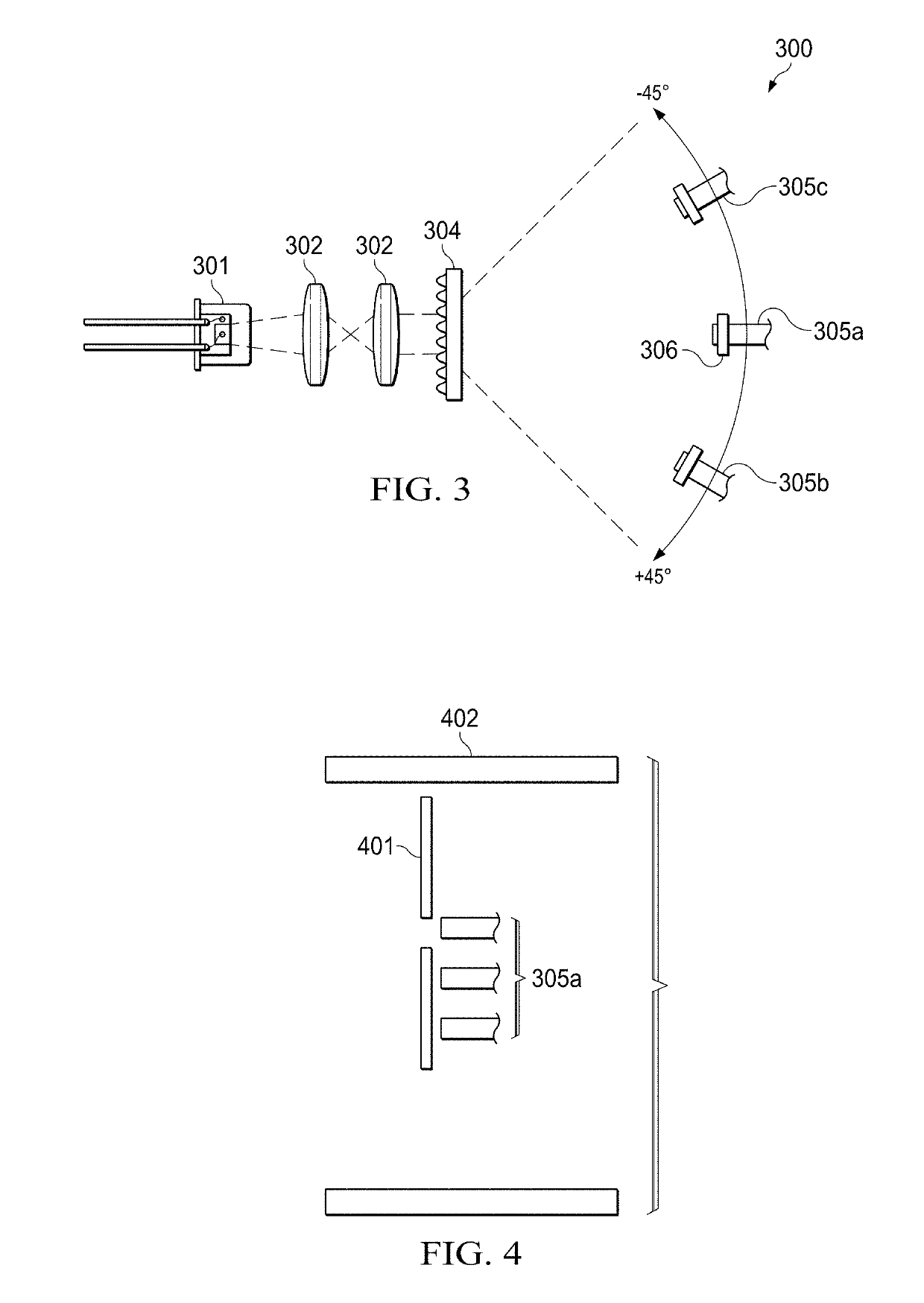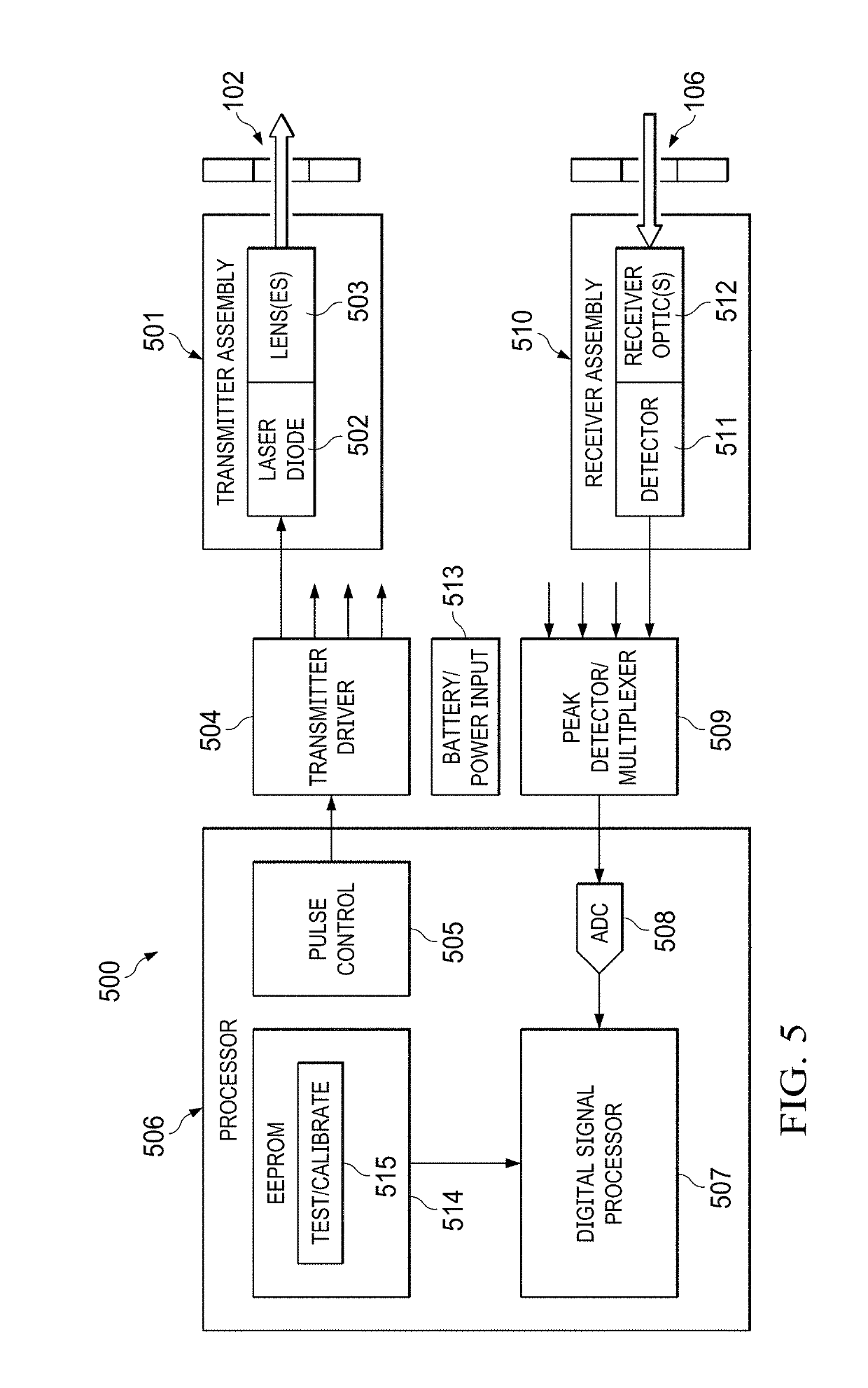Compact test range for active optical target detectors
a target detector and compact technology, applied in the direction of instruments, optical elements, measurement devices, etc., can solve the problems of large space requirements and high cost, and achieve the effect of reducing linear distance, reducing linear distance, and reducing linear distan
- Summary
- Abstract
- Description
- Claims
- Application Information
AI Technical Summary
Benefits of technology
Problems solved by technology
Method used
Image
Examples
Embodiment Construction
[0013]It should be understood at the outset that, although exemplary embodiments are illustrated in the figures and described below, the principles of the present disclosure may be implemented using any number of techniques, whether currently known or not. The present disclosure should in no way be limited to the exemplary implementations and techniques illustrated in the drawings and described below. Additionally, unless otherwise specifically noted, articles depicted in the drawings are not necessarily drawn to scale.
[0014]Electro-optic (EO) devices such as active optical target detectors (AOTDs) may be employed to detect objects over a range of distances. For example, a missile equipped with “near miss” detection, in order to detonate munitions when the target is within a predetermined range despite the lack of a direct hit, may detect decreasing and then increasing distance to the target as well as whether the current range to the target is less than a maximum distance at which ...
PUM
| Property | Measurement | Unit |
|---|---|---|
| distances | aaaaa | aaaaa |
| distance | aaaaa | aaaaa |
| length | aaaaa | aaaaa |
Abstract
Description
Claims
Application Information
 Login to View More
Login to View More - R&D
- Intellectual Property
- Life Sciences
- Materials
- Tech Scout
- Unparalleled Data Quality
- Higher Quality Content
- 60% Fewer Hallucinations
Browse by: Latest US Patents, China's latest patents, Technical Efficacy Thesaurus, Application Domain, Technology Topic, Popular Technical Reports.
© 2025 PatSnap. All rights reserved.Legal|Privacy policy|Modern Slavery Act Transparency Statement|Sitemap|About US| Contact US: help@patsnap.com



